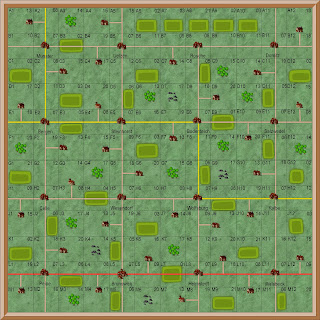
One of the players recently queried the battle report regarding a cavalry melee. The entries on the blog are never more than one or two days old, so I could remember what happened. But I wanted to check the report to make sure that I had the details right. It was then that I realised how complicated and technical the reports actually are.
When I first started to publish the battle reports they were much less detailed. They were part of a solo campaign then, and I just wanted a record of the wargames we had fought so that I could read back through them in the future. I assumed that anyone else who read them would not really be interested in a lot of detail.
But when the PBEM started I wanted the players, and particularly those involved in the battle, to be able to follow each step. As the battle reports became more detailed, I started to put a reference to the rule concerned in notes at the end of the report. This has led to a lot of visits to the wargame rule blog, which is currently at more than 12,000. Not bad for a set of “house rules” only 18 months old.
Having concluded that the present report are too complicated, I posted on the campaign forum to ask whether readers would prefer the present complicated battle report, or a more descriptive and less technical method. Given the number of visits to the campaign diary I was surprised to receive only two replies. Worst still one was in favour of the present system and one preferred a less technical style. Presumably the remainder did not care much for one or the other.
Given that there is a considerable amount of work involved in the current reports, it hardly seems worth the extra effort for just one reader. So when the new campaign starts I will use a more descriptive, but less time consuming, method.







